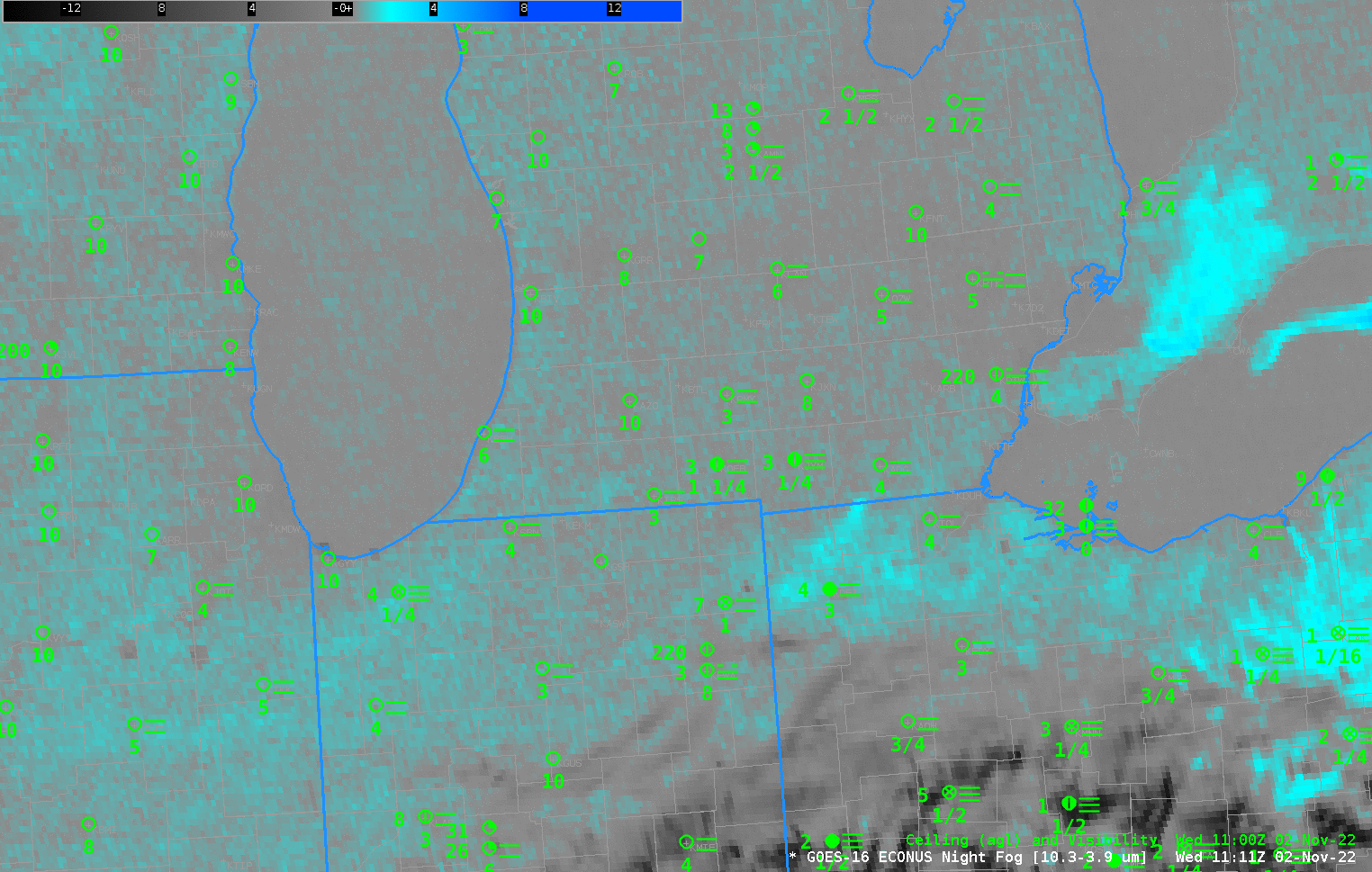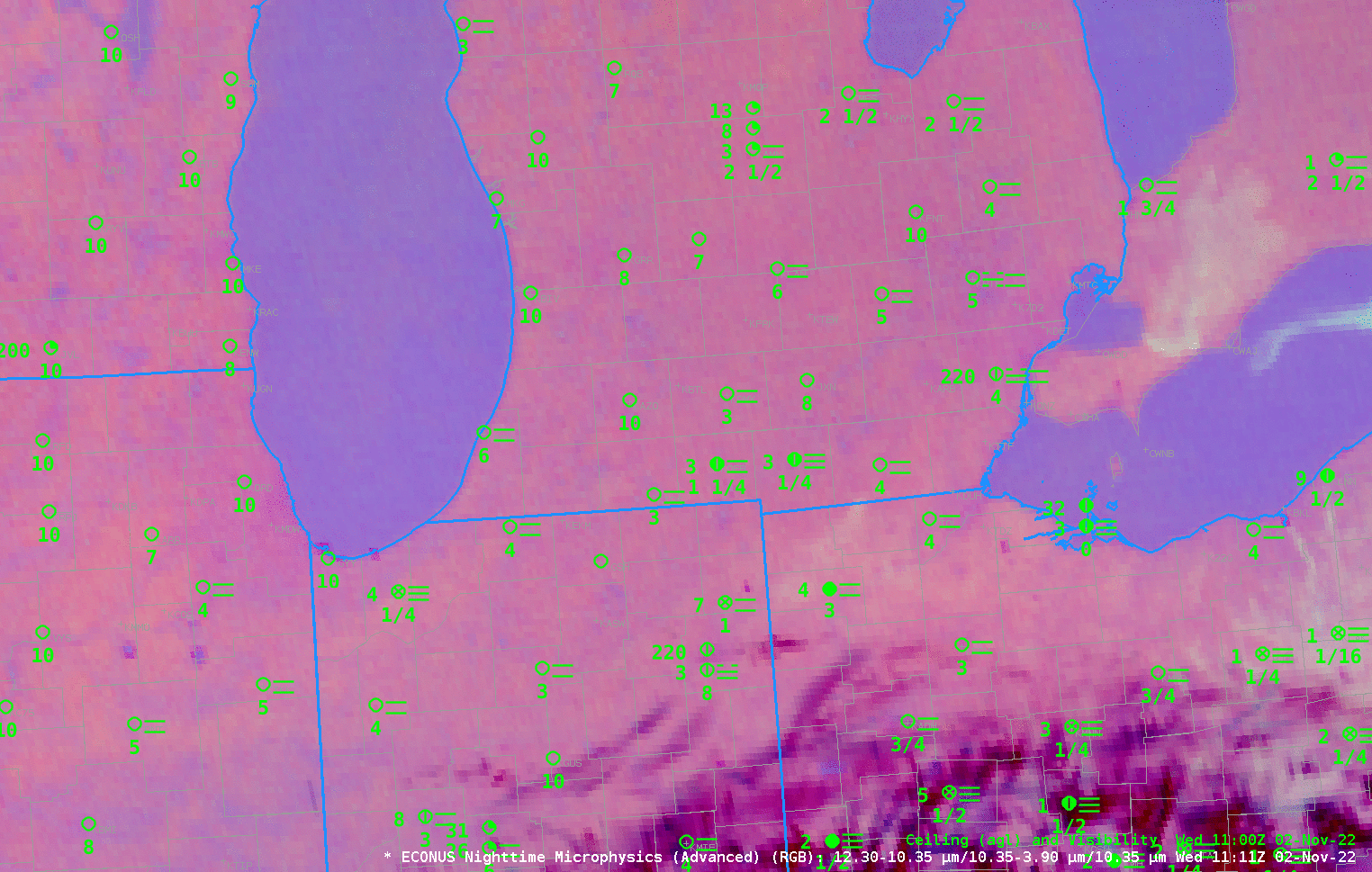IFR Probability over Michigan and Ohio

GOES-16 IFR Probability fields, shown above, (click here for a slower animation) combine satellite information about low clouds with Rapid Refresh model estimates of low-level saturation. On this day, regions of observed IFR conditions (that is, ceiling less than 1000 feet and/or visibilities less than 3 statute miles) are apparent over south-central Lower Michigan, northeast Indiana and northwest Ohio. IFR probability fields overlap those regions nicely. The flat IFR Probability field over central Ohio (where dense fog is also observed) is consistent with IFR Probability being computed solely with model data — because high clouds prevent the satellite from viewing low clouds.
Night Fog Brightness Temperature Difference fields, below, and Night Microphysics RGB, at bottom, can sometimes be used to detect low clouds and fog. But not on 2 November 2022! On this day, neither field showed a strong signal of fog. (Note that the high clouds over the fog in Ohio are readily apparent). If you incorporate all satellite-based fog detection products into procedures, then all products can be viewed when needed.


GOES-R Cloud Thickness (from just before sunrise) can be used to help predict how long it will take for burn-off. Magenta values shown below are in the 600-700 foot range, that is, very thin fog that will burn off quickly. Note the region over northwestern Ohio where the cloud thickness values are bluer; cloud thickness values there are closer to 850-900 feet, and you might expect fog to linger there a bit longer. Indeed, an mp4 True-Color animation from CSPP Geosphere, shown below, shows fog after sunrise in the region over northwestern Ohio where Cloud Thickness is greatest.

Thanks to TJ Turnage, SOO in Grand Rapids, Michigan for alerting us to this case.

